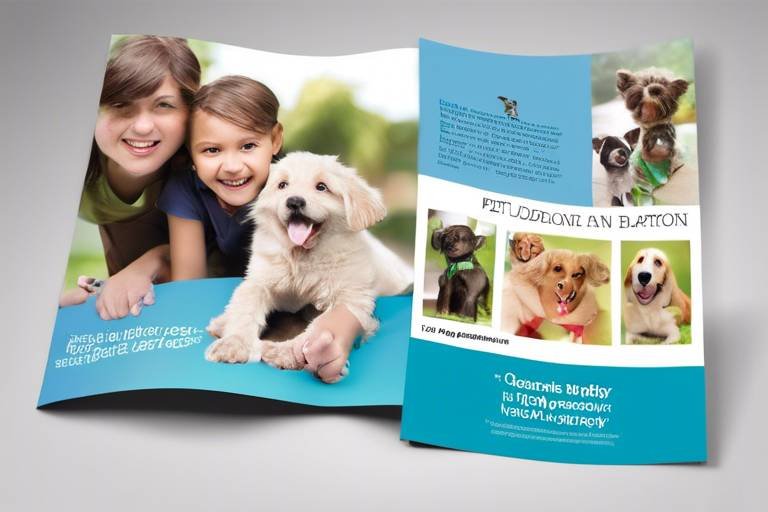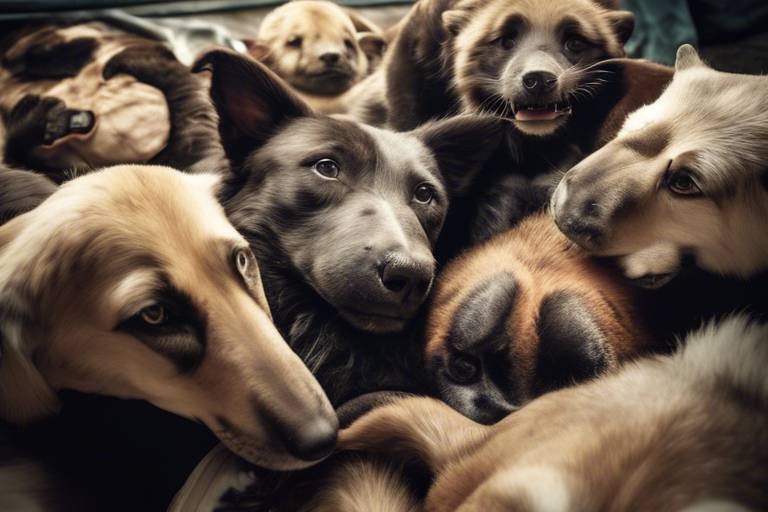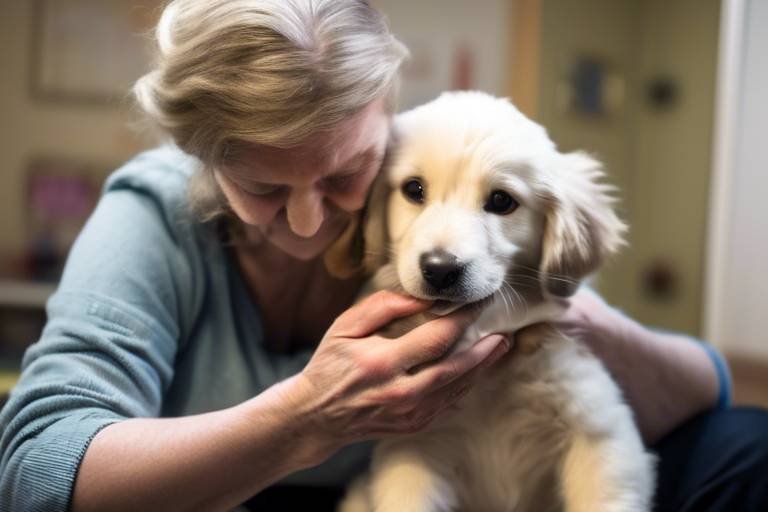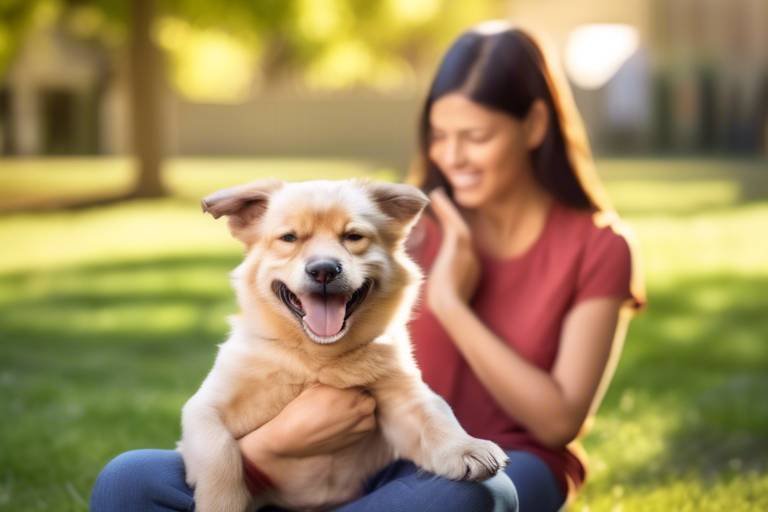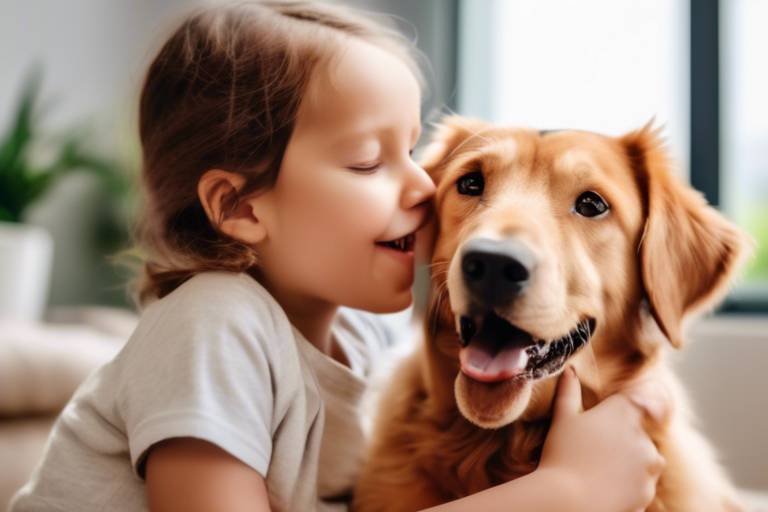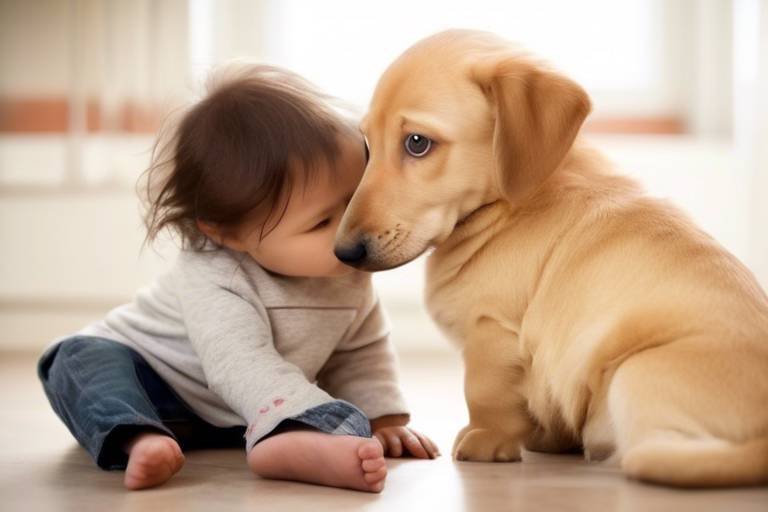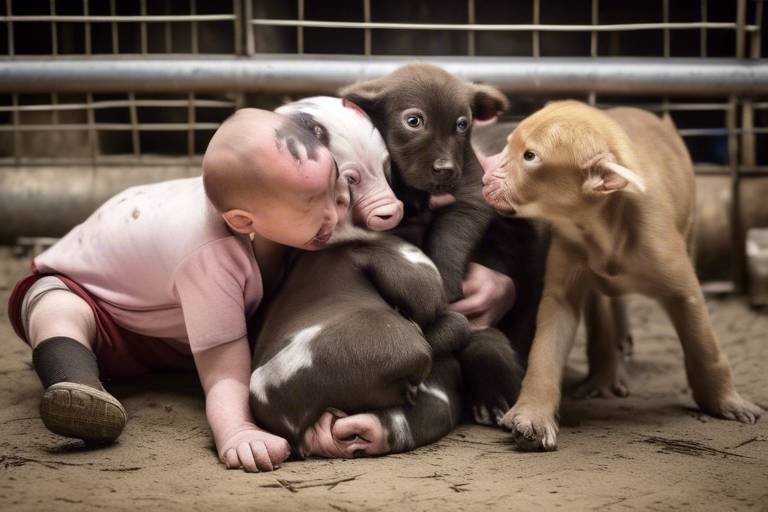How to Create an Effective Pet Adoption Brochure
Creating an effective pet adoption brochure is not just about printing out some pretty pictures and listing a few details. It's about crafting a compelling narrative that resonates with potential adopters. Think of your brochure as a warm invitation to open your heart and home to a new furry friend. With the right approach, your brochure can become a powerful tool that not only showcases the adorable pets in your shelter but also highlights the joys and responsibilities of pet ownership. In this article, we'll explore various strategies to design a brochure that captures attention, communicates effectively, and ultimately leads to successful adoptions.
Before you even pick up a graphic design tool, it's essential to understand who you're talking to. Knowing your target audience is crucial for tailoring your message in a way that resonates. Are you reaching out to families with kids? Young professionals looking for companionship? Each group has unique motivations for adopting a pet. For instance, families might be interested in how a pet can teach children responsibility, while young professionals may be looking for a loyal friend to come home to after a long day. By understanding these nuances, you can create content that speaks directly to their hearts, making them more likely to consider adoption.
The format of your brochure can significantly impact its effectiveness. You have several options, each with its own advantages. A tri-fold brochure is compact and easy to distribute, making it ideal for events or clinics. On the other hand, a booklet format allows for more detailed information and storytelling, perfect for showcasing multiple pets or success stories. Consider where and how your brochure will be distributed. If it's going to be handed out at busy events, a tri-fold might be the way to go. But if you're placing them in waiting rooms or on counters, a booklet could engage readers for a longer time.
Design plays a pivotal role in how your brochure is perceived. A well-designed brochure can attract attention and keep readers engaged. Here are some essential design principles to keep in mind:
- Color Schemes: Use colors that evoke warmth and friendliness. Soft pastels or vibrant colors can create an inviting atmosphere.
- Typography: Choose fonts that are easy to read. Avoid overly decorative fonts that may distract from your message.
- Layout: Ensure that your layout is clean and organized. Use headings, subheadings, and bullet points to guide the reader’s eye.
Remember, the goal is to make your brochure visually appealing while ensuring that the information is easily digestible.
High-quality images and graphics are vital for attracting attention. When selecting visuals, choose images that showcase the pets in their best light—happy, playful, and full of life. A picture of a dog playing fetch or a cat lounging in a sunbeam can evoke an emotional response from potential adopters. Consider using before-and-after images of pets that have been adopted to illustrate the transformative power of adoption. This not only highlights the pets but also tells a story that can inspire others to adopt.
A strong call to action (CTA) is essential for encouraging readers to take the next step. Your CTA should be clear, concise, and compelling. Phrases like "Visit us today to meet your new best friend!" or "Contact us to learn more about our adoption process!" can motivate potential adopters to act. Additionally, consider including QR codes that link to your website or social media pages for easy access to more information.
The content of your brochure should create an emotional connection. Rather than just listing facts about each pet, write engaging descriptions that highlight their unique personalities. For example, instead of saying, "This dog is friendly," you could say, "Meet Max, the ultimate cuddle buddy who loves to snuggle on the couch after a long walk." Such descriptions help potential adopters envision themselves with the pet, making them more likely to consider adoption. Don’t forget to include the benefits of adopting, such as saving a life, gaining a loyal companion, and the joy of giving a pet a second chance.
Once your brochure is created, effective distribution is key. You want to ensure that it reaches the right people. Here are some strategies for distributing your brochures:
- Local Events: Set up a booth at community events such as fairs or pet expos.
- Veterinary Clinics: Partner with local vets to display your brochures in their waiting areas.
- Online Platforms: Share digital versions of your brochure on social media and your website.
By diversifying your distribution methods, you can reach a wider audience and increase the chances of finding loving homes for your pets.
Evaluating the effectiveness of your brochure is essential for improvement. Consider implementing methods for tracking responses, such as:
- Creating a unique phone number or email address for inquiries.
- Asking adopters how they heard about the pets.
- Monitoring social media engagement if you share digital versions.
Feedback from potential adopters will provide valuable insights that can help you refine future brochures and improve your outreach efforts.
Q: How can I make my brochure stand out?
A: Use vibrant colors, high-quality images, and engaging content that tells a story about each pet.
Q: What should I include in my brochure?
A: Include pet descriptions, adoption benefits, a strong call to action, and contact information.
Q: How do I distribute my brochures effectively?
A: Consider local events, veterinary clinics, and online sharing to reach a broader audience.
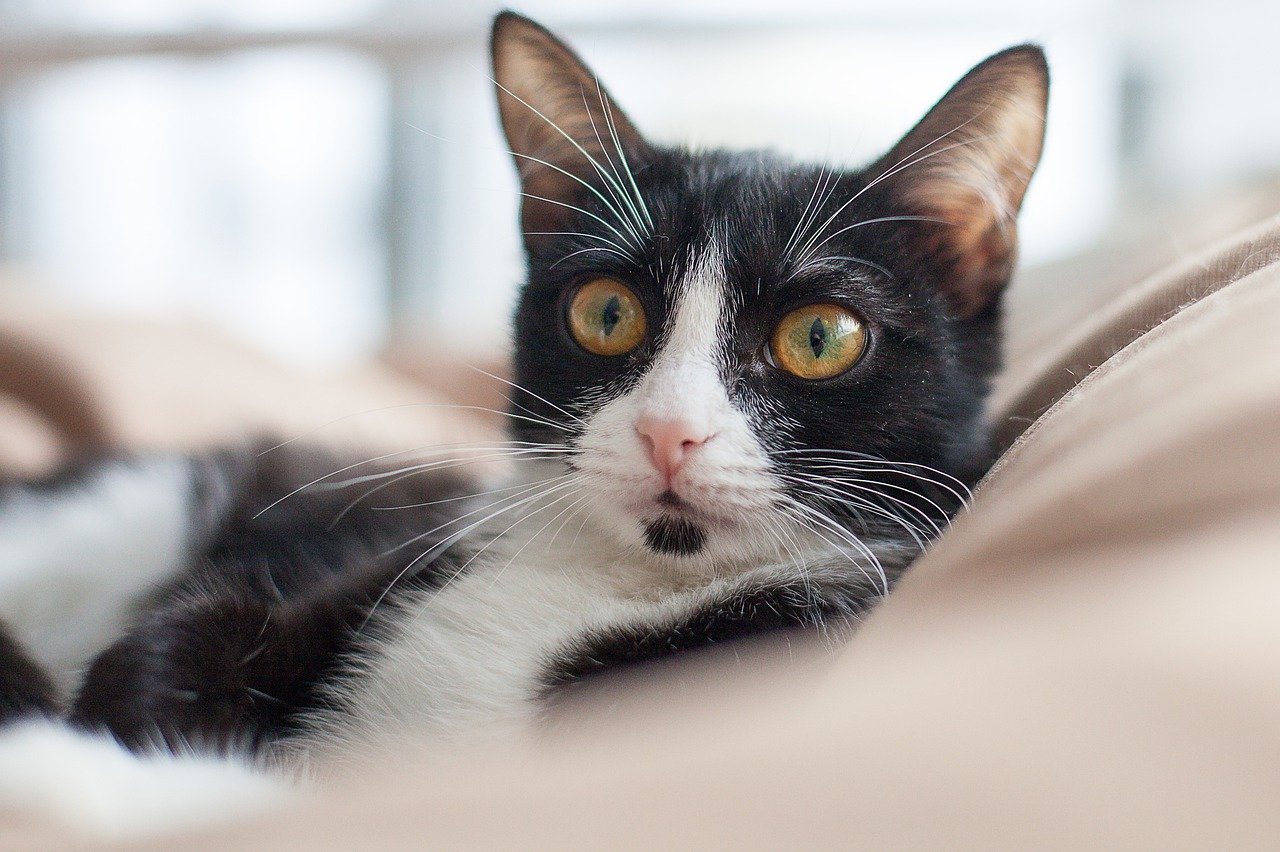
Understanding Your Audience
When it comes to creating an effective pet adoption brochure, understanding your audience is not just important; it’s absolutely crucial. Think about it: who are the people most likely to adopt a pet? Are they families with children, young professionals, or perhaps retirees looking for companionship? Each of these groups has different motivations and concerns when it comes to adopting a pet. By identifying your target audience, you can tailor your message to resonate with them on a deeper level.
For instance, families may be looking for a pet that is friendly and good with kids, while young professionals might prioritize a pet that is low-maintenance and adaptable to a busy lifestyle. Retirees, on the other hand, may seek companionship and a pet that can keep them active. Understanding these nuances allows you to craft messages that speak directly to their needs and desires.
Consider conducting a little research to gather insights about your potential adopters. You could use surveys, social media polls, or even informal conversations at local pet events. This information can help you identify key motivations that drive people to adopt pets, such as:
- Companionship: Many people adopt pets to combat loneliness.
- Family bonding: Pets can strengthen family ties and create shared experiences.
- Animal welfare: Some adopters are motivated by a desire to rescue animals in need.
- Health benefits: Research shows that pets can improve mental and physical health.
Once you have a clear understanding of your audience, you can effectively highlight the benefits of adopting a pet in your brochure. Use language that resonates with your target demographic, and incorporate stories or testimonials that reflect their experiences and values. For example, if you’re targeting families, include heartwarming stories of children bonding with their new furry friends. If your audience consists of young professionals, talk about how a pet can enhance their lifestyle, providing both companionship and joy.
In summary, understanding your audience is the foundation of creating an impactful pet adoption brochure. By knowing who you’re talking to and what they care about, you can create a brochure that not only captures attention but also inspires action. Remember, your goal is to create an emotional connection that motivates potential adopters to take that exciting step towards bringing a new pet into their lives.

Choosing the Right Format
When it comes to creating an effective pet adoption brochure, the format you choose can make all the difference. Think of your brochure as the first impression a potential adopter will have of your organization and the pets you have available. Just like a well-organized bookshelf draws you in, a well-structured brochure can captivate your audience. There are several formats to consider, each with its own set of advantages. The most popular choices include tri-fold brochures, booklets, and flyers.
Tri-fold brochures are incredibly popular due to their compact size and ease of distribution. When folded, they fit perfectly into standard envelopes, making them ideal for mailing or handing out at events. Their three-panel design allows you to compartmentalize information effectively. For example, one panel can showcase adorable photos of pets, another can detail the adoption process, and the last can include testimonials from happy adopters. This format is not only visually appealing but also encourages readers to unfold and explore further.
On the other hand, booklets offer a more extensive option for those wanting to provide detailed information. They allow for multiple pages, giving you the opportunity to include in-depth stories about each pet, their unique personalities, and the benefits of adopting from a shelter. Booklets can be particularly engaging if you want to include success stories or highlight the positive impact of adoption on the community. However, keep in mind that they can be more expensive to produce, so consider your budget before diving in.
Another format to consider is the flyer. While they may seem simple, flyers can be incredibly effective for quick information dissemination. They work well for events or community boards where people might only glance at them for a moment. A flyer can include a striking image of a pet alongside a brief, compelling message, making it easy for potential adopters to take a quick look. However, the challenge with flyers is ensuring that they contain enough information to prompt further interest without overwhelming the reader.
To help you decide, here’s a quick comparison of the three formats:
| Format | Advantages | Considerations |
|---|---|---|
| Tri-fold | Compact, easy to distribute, compartmentalized information | Limited space for detailed information |
| Booklet | In-depth information, multiple pages for storytelling | More expensive to produce |
| Flyer | Quick information, eye-catching visuals | May lack detailed information |
Ultimately, the format should align with your goals and the message you want to convey. Consider your audience—are they likely to take the time to read a booklet, or do they prefer quick, digestible information? Once you answer that question, you’ll be on your way to selecting the right format that not only captures attention but also drives potential adopters to your shelter.
Design Elements to Consider
When creating a pet adoption brochure, the design elements you choose can make or break its effectiveness. Think of your brochure as the front door to a shelter; it needs to be inviting and engaging enough to pull potential adopters in. Start with the color scheme. Colors evoke emotions, so choose a palette that reflects warmth and positivity. For example, soft blues and greens can create a calming effect, while vibrant yellows and oranges can invigorate and inspire happiness. The right colors will not only attract attention but also communicate the joy of adopting a pet.
Next up is typography. The fonts you select should be easy to read and align with the overall tone of your message. A mix of playful and professional fonts can work wonders, but be careful not to overdo it. Stick to two or three complementary fonts to maintain a clean and cohesive look. For instance, use a bold font for headings to grab attention and a simpler font for body text to ensure readability. Remember, your goal is to make the information accessible to everyone, including those who may not be familiar with reading brochures.
The layout of your brochure is equally important. A well-structured layout guides the reader’s eye through the content effortlessly. Consider using a tri-fold design, which naturally divides the information into sections, making it easier for potential adopters to digest. Ensure that each panel has a clear focus, whether it’s showcasing adorable pets, sharing heartwarming success stories, or providing essential information about the adoption process. Using white space effectively can also enhance readability and prevent the brochure from feeling cluttered.
Moreover, integrating images and graphics can significantly elevate your brochure's appeal. High-quality photos of the pets available for adoption are essential. They should be clear, well-lit, and portray the animals in a positive light. Consider using images that show the pets in action—playing, cuddling, or interacting with people. This not only draws attention but also helps potential adopters visualize the joy of having a furry friend at home. Additionally, infographics can be a powerful tool to convey statistics about the benefits of adoption or the impact of adopting from a shelter.
Finally, don’t forget the call to action. This is where you encourage readers to take the next step, whether it’s visiting the shelter, calling for more information, or checking out the website. Use strong, action-oriented phrases like “Meet Your New Best Friend Today!” or “Adopt Love, Adopt Today!” Make sure this section stands out visually, perhaps by using a contrasting color or a bold font. The aim is to create a sense of urgency and excitement that motivates potential adopters to act immediately.
In summary, the design elements of your pet adoption brochure should work together to create a harmonious and engaging experience for the reader. By carefully considering your color scheme, typography, layout, images, and calls to action, you can craft a brochure that not only attracts attention but also resonates emotionally with potential adopters.
Q: What is the ideal size for a pet adoption brochure?
A: The most common sizes are tri-fold (8.5" x 11") and booklet formats. Choose based on the amount of information you want to include.
Q: How many brochures should I print?
A: It depends on your distribution strategy. Start with a few hundred and adjust based on demand and feedback.
Q: Can I include multiple pets in one brochure?
A: Absolutely! Just ensure each pet has a dedicated section with their own photo and description to maintain clarity.
Q: How often should I update my brochure?
A: Regularly update your brochure to reflect new pets available for adoption and any changes in your shelter’s policies or events.
Images and Graphics
When it comes to creating a pet adoption brochure, play a pivotal role in capturing the attention of potential adopters. Think of your brochure as a window into the world of the pets you are trying to promote. High-quality visuals can evoke emotions that words alone often cannot. Imagine flipping through a brochure filled with vibrant images of adorable pets, each one telling a story of hope and companionship. This is the kind of impact you want to create!
Choosing the right images is not just about aesthetics; it's about connecting with your audience on an emotional level. You want to select visuals that showcase the unique personalities of the pets. For instance, a picture of a dog with a goofy grin or a cat curled up in a cozy spot can make potential adopters smile and feel a sense of warmth. It's essential to use high-resolution images that are clear and visually appealing. Blurry or poorly lit photos can detract from the overall professionalism of your brochure.
Moreover, consider the layout of your images within the brochure. A cluttered design can overwhelm readers, making it difficult for them to focus on the pets. Instead, aim for a clean and organized layout where images complement the text. For example, you might place a captivating image of a pet on one side of the brochure, with a heartfelt description on the other. This balance allows readers to engage with both the visuals and the content seamlessly.
Alongside images, incorporating graphics such as icons or infographics can enhance the brochure's appeal. These elements can help convey important information quickly and effectively. For instance, you could use icons to represent various pet care tips or adoption benefits, making it easier for readers to digest the information. A well-designed infographic showcasing the adoption process can also be a fantastic addition, guiding potential adopters step-by-step.
In summary, the right images and graphics can transform your pet adoption brochure from a simple informational piece into a powerful tool for advocacy. By focusing on high-quality visuals, thoughtful layout, and engaging graphics, you can create a brochure that not only attracts attention but also inspires action. After all, every picture tells a story, and in the world of pet adoption, those stories can lead to forever homes.
- What type of images should I use in my brochure? Aim for high-resolution images that showcase the pets' personalities and evoke emotions.
- How can I ensure my brochure design is effective? Keep the layout clean and organized, balancing images with text for optimal engagement.
- Should I include graphics in my brochure? Yes! Graphics like icons and infographics can help convey information quickly and effectively.
- How important is the emotional appeal of my brochure? Extremely important! Emotional connections can motivate potential adopters to take action.
Call to Action
When creating a pet adoption brochure, one of the most crucial elements to include is a strong call to action (CTA). This is your chance to inspire potential adopters to take that leap from mere interest to actual action. Think of the CTA as the bridge that connects the reader's desire to adopt a pet with the steps they need to take to make it happen. It's not just about telling them what to do; it's about making them feel excited and empowered to do it!
To craft an effective CTA, consider using phrases that evoke emotion and urgency. For instance, instead of simply saying "Visit us today," you might say, "Give a loving pet a forever home—visit us today!" This not only informs the reader but also tugs at their heartstrings. Additionally, using actionable verbs can make a big difference. Words like "adopt," "discover," and "join" create a sense of participation and engagement.
Here are some effective strategies to enhance your call to action:
- Be Clear and Direct: Your CTA should leave no room for confusion. Use straightforward language that tells the reader exactly what to do next.
- Create a Sense of Urgency: Phrases such as "Limited time offer!" or "Don't wait—adopt today!" can encourage immediate action.
- Highlight the Benefits: Remind potential adopters of the joy and companionship a pet can bring to their lives. For example, "Find your new best friend today!"
Moreover, consider placing your CTA in multiple locations within the brochure. A well-placed CTA at the beginning can capture attention, while another at the end can serve as a final nudge. Visual elements like buttons or colorful banners can also make your CTA stand out. After all, you want your readers to feel like they can’t resist taking action!
Lastly, always provide clear contact information or links to your shelter’s website. Whether it's a phone number, an email address, or social media handles, make sure potential adopters know how to reach you easily. The easier you make it for them to connect, the more likely they are to follow through.
As you design your pet adoption brochure, it might be helpful to anticipate some questions your readers may have. Here are a few common inquiries and responses:
| Question | Answer |
|---|---|
| What is the adoption process? | The adoption process typically involves filling out an application, meeting the pet, and completing an interview. We want to ensure a perfect match! |
| Are there any fees associated with adoption? | Yes, there may be an adoption fee that helps cover the costs of vaccinations, spaying/neutering, and other care. |
| Can I adopt if I have other pets? | Absolutely! We encourage you to bring your pets in for a meet-and-greet to ensure everyone gets along. |
| What if I need to return the pet? | We understand that circumstances change. If you need to return your adopted pet, please contact us for assistance. |
Content That Connects
Creating a pet adoption brochure is not just about showcasing cute animals; it’s about forging a connection between the reader and the pets waiting for a loving home. When you craft your content, think of it as telling a story rather than just listing facts. You want potential adopters to feel something—an emotional tug that makes them envision their lives with a new furry friend. Start by writing engaging descriptions of each pet. Rather than just stating their breed or age, delve into their personalities. For example, instead of saying "This dog is 2 years old," you might say, "Meet Charlie, a playful 2-year-old who thinks every day is an adventure! He loves to chase squirrels and snuggle during movie nights." This approach not only informs but also paints a vivid picture that potential adopters can relate to.
Moreover, including testimonials from happy adopters can significantly enhance the emotional appeal of your brochure. These real-life stories can make a world of difference. You might include a section like this:
| Adopter Name | Pet Adopted | Testimonial |
|---|---|---|
| Sarah Johnson | Max | "Adopting Max was the best decision! He has brought so much joy into our lives." |
| David Smith | Bella | "Bella is my best friend. I can't imagine life without her!" |
In addition to personal stories, it’s crucial to highlight the benefits of adoption. Many people may not realize how adopting a pet can positively impact their lives. You can mention aspects like:
- Companionship and emotional support
- Health benefits, such as reduced stress and increased physical activity
- The satisfaction of saving a life and helping reduce shelter overcrowding
By presenting these points in a relatable manner, you can encourage potential adopters to see beyond the immediate responsibilities of pet ownership and instead focus on the joy and fulfillment that comes with it. Remember, the goal is to create content that resonates on a deeper level, making readers not just consider adoption, but feel compelled to act.
Finally, don’t forget to include a “Did You Know?” section that shares interesting facts about pet adoption. This can spark curiosity and further engage your audience. For instance:
- Did you know that adopting a pet can lower your blood pressure?
- Over 6 million pets enter shelters every year in the U.S. alone!
- Adopted pets are often just as loving and loyal as those bought from breeders.
In summary, the content of your brochure should not only inform but also connect emotionally with potential adopters. By sharing stories, highlighting benefits, and including engaging facts, you can create a compelling narrative that encourages people to take that important step toward adoption.
Q: What should I include in my pet adoption brochure?
A: Your brochure should include engaging pet descriptions, testimonials from adopters, benefits of adoption, and high-quality images of the pets.
Q: How can I make my brochure stand out?
A: Use eye-catching design elements, compelling stories, and emotional appeals. Highlight the unique personalities of the pets to create a connection with potential adopters.
Q: Where should I distribute my brochures?
A: Distribute your brochures at local events, veterinary clinics, pet stores, and online platforms. Consider partnering with community organizations to reach a wider audience.
Q: How do I measure the success of my brochure?
A: Track responses by including a unique contact method or offer incentives for adopters who mention the brochure. Gathering feedback will help refine future efforts.

Distribution Strategies
Once you've crafted the perfect pet adoption brochure, the next step is to ensure it reaches the right audience. Just like a well-cooked meal needs to be served at the right table, your brochure needs to be distributed effectively to attract potential adopters. There are various strategies you can employ to get your brochure into the hands of those who will appreciate it the most. Think of your distribution methods as the delivery system for your message – the more strategic you are, the more impact you'll have.
First and foremost, consider local events. Community gatherings, pet fairs, and adoption drives are prime opportunities to showcase your brochure. Imagine setting up a booth at a local festival, where you can engage directly with pet lovers and hand them your brochure. This face-to-face interaction not only allows you to explain the benefits of adoption but also helps build a personal connection. You could even include a sign-up sheet for those interested in receiving more information, creating a direct line of communication for follow-ups.
Another effective strategy is to collaborate with local veterinary clinics. These establishments often come into contact with pet owners who might be considering adoption or looking to expand their family. By placing your brochures in waiting areas, you can reach individuals who are already invested in the well-being of animals. It's like planting seeds in a garden; with the right care and nurturing, they can grow into something beautiful.
Online platforms are also a powerful tool in your distribution arsenal. Social media channels like Facebook, Instagram, and Twitter can amplify your reach exponentially. Create engaging posts featuring your brochure along with adorable pictures of the pets available for adoption. Encourage followers to share your posts, turning your local message into a viral sensation. You could even consider setting up a virtual event where people can learn about the adoption process and view your brochure digitally.
For a more targeted approach, think about local businesses that align with your mission. Pet stores, grooming salons, and even coffee shops can be excellent places to display your brochures. Establishing partnerships with these businesses can lead to mutual benefits; they get to support a good cause, while you gain access to their clientele. It's a win-win situation that fosters community spirit and encourages pet adoption.
To summarize, here are some key distribution strategies to consider:
- Participate in local events and pet fairs.
- Place brochures in veterinary clinics.
- Utilize social media for wider reach.
- Collaborate with local businesses for mutual promotion.
Remember, the goal is not just to hand out brochures, but to create a buzz around pet adoption. By employing a mix of these strategies, you can maximize your brochure's visibility and effectiveness. Each brochure you distribute is a chance to change a pet's life, and with the right approach, you can inspire many potential adopters to take that leap of faith.
Q: How many brochures should I print?
A: The number of brochures to print depends on your distribution strategy and the size of your target audience. Start with a manageable quantity and adjust based on demand.
Q: What should I include in my brochure?
A: Your brochure should include engaging descriptions of available pets, adoption benefits, contact information, and a strong call to action.
Q: How can I track the effectiveness of my brochure?
A: Use unique URLs or QR codes that lead to your website or social media pages. This way, you can measure how many people engage with your content after receiving your brochure.
Measuring Success
Once you've crafted your pet adoption brochure, it's crucial to assess its effectiveness. Measuring success is not just about counting how many brochures you distribute; it's about understanding how well they resonate with potential adopters and how they influence adoption rates. Think of it as a treasure hunt where each clue leads you closer to your goal of finding loving homes for pets.
One of the first steps in measuring success is to establish clear objectives. What do you want to achieve with your brochure? Is it to increase foot traffic to your shelter, raise awareness about specific pets, or simply educate the public about the benefits of adoption? Setting measurable goals will help you evaluate your brochure's impact more effectively.
Next, consider implementing tracking methods to gather data on how your brochure is performing. Here are a few strategies:
- Unique QR Codes: Incorporate QR codes that link to your shelter's website or specific pet profiles. This allows you to track how many people scanned the code and visited the site.
- Feedback Forms: Include a brief survey on your website, asking visitors how they heard about the shelter. This can provide insights into the effectiveness of your brochure.
- Adoption Tracking: Keep a log of adoptions that occur after your brochures are distributed, noting which locations had the most success.
Additionally, consider the feedback you receive from potential adopters. Are they asking questions that your brochure answered? Are they expressing interest in specific pets featured in your brochure? Regularly collecting feedback will allow you to refine your content and design for future brochures.
Don't forget to analyze the distribution channels you've chosen. For instance, if you placed brochures in veterinary clinics, check if adoption inquiries increased after distribution. You can create a simple table to compare the effectiveness of different locations:
| Distribution Location | Inquiries Received | Adoptions Resulting |
|---|---|---|
| Veterinary Clinics | 50 | 10 |
| Local Pet Stores | 30 | 5 |
| Community Events | 70 | 15 |
Finally, remember that measuring success is an ongoing process. After collecting data and feedback, take the time to analyze what worked and what didn’t. This reflection will not only enhance your future brochures but also contribute to the broader mission of promoting pet adoption. So, keep your eyes on the prize: every successful adoption means a happy pet and a grateful family!
Q: How can I tell if my brochure is effective?
A: You can measure effectiveness through tracking inquiries, adoption rates, and feedback from potential adopters. Establish clear goals and use methods like unique QR codes and feedback forms to gather data.
Q: What should I include in my brochure?
A: Include engaging descriptions of pets, high-quality images, a strong call to action, and information about the adoption process and benefits.
Q: How often should I update my brochure?
A: It's a good idea to update your brochure regularly, especially when you have new pets available for adoption or if there are changes in your adoption process.
Frequently Asked Questions
- What should I include in my pet adoption brochure?
Your pet adoption brochure should include engaging content that highlights the unique personalities of the pets available for adoption. Be sure to include high-quality images, a compelling call to action, and information about the benefits of adopting from shelters. Don’t forget to provide contact details and location information for your shelter.
- How can I make my brochure visually appealing?
To create a visually appealing brochure, focus on design elements like color schemes, typography, and layout. Use bright, attractive colors that resonate with your audience and ensure that the text is easy to read. Incorporating high-quality images of pets can also enhance the overall look and feel of your brochure.
- What format is best for a pet adoption brochure?
Choosing the right format depends on your content and distribution strategy. Tri-fold brochures are popular for their compact size and ease of handling, while booklets allow for more detailed information. Consider your audience and how they will interact with your brochure when making your choice.
- How can I effectively distribute my brochures?
Effective distribution can include placing brochures in local veterinary clinics, pet stores, and community centers. Participating in local events, such as pet fairs or adoption drives, is another great way to get your brochures into the hands of potential adopters. Additionally, consider sharing digital versions on social media and your website.
- What makes a strong call to action?
A strong call to action is clear, concise, and compelling. Use phrases like “Visit us today to meet your new best friend!” or “Contact us for more information on how to adopt!” to motivate readers. Make sure it stands out in your brochure to catch the reader's attention immediately.
- How can I measure the success of my brochure?
To measure the success of your brochure, track responses from potential adopters. You can include unique contact numbers or URLs to see how many people reach out after receiving the brochure. Additionally, gathering feedback through surveys can provide insights into what works and what can be improved for future editions.

